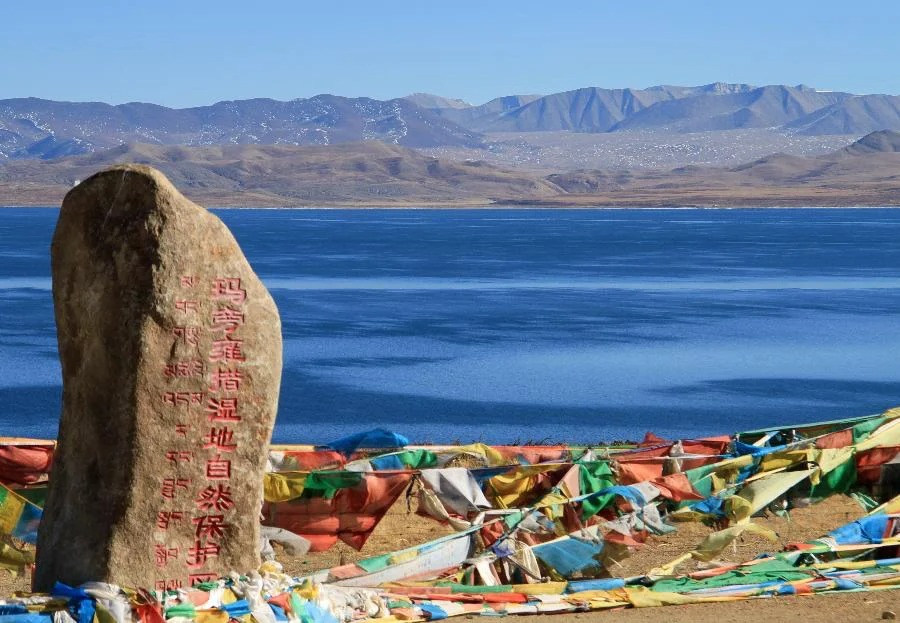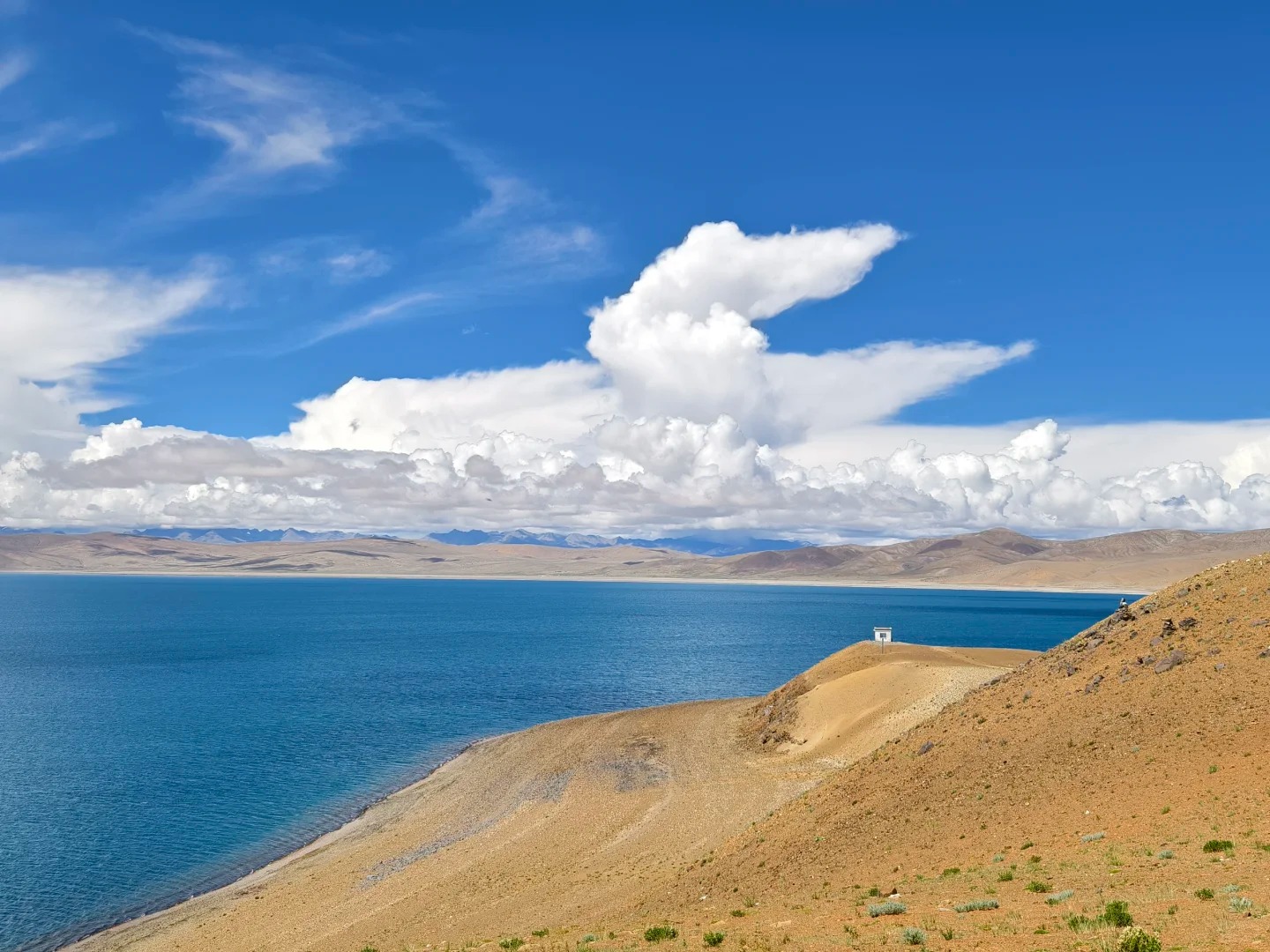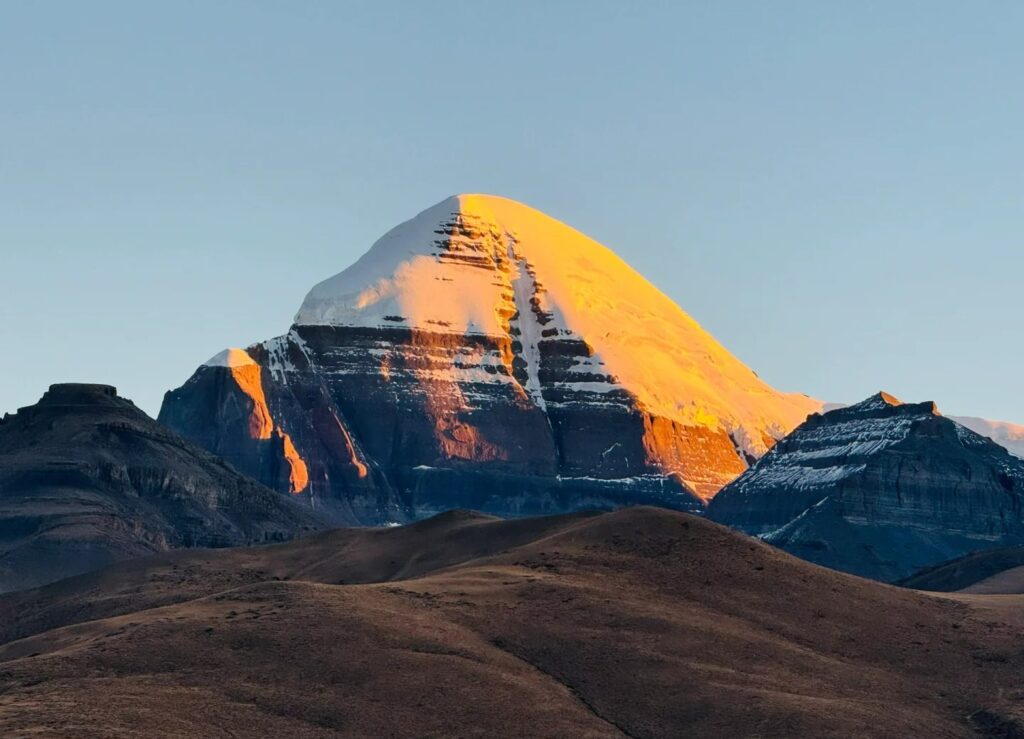Visiting Information
| Information | Details |
|---|---|
| Chinese Name | 玛旁雍错 (Mǎpáng Yōng Cuò) |
| Location and Address | Burang County, Ngari Prefecture, Tibet Autonomous Region, China |
| Opening Hours | Open 24 hours (Best to visit during daylight hours) |
| Entrance Fee | No specific entrance fee, but permits are required for visiting Tibet |
| How to Get There | By Metro: Not available By Bus: Organized tours from Lhasa or nearby towns By Taxi: Not recommended due to remote location |
| Best Time for Visit | May to October, with the best conditions from July to September |
| Contact Info | No specific contact info available. Visitors should arrange through travel agencies in Lhasa or other major cities. |
Overview
Lake Manasarovar, also known as Mapam Yumtso in Tibetan, is a high-altitude freshwater lake located in the Tibet Autonomous Region of China. Situated at an elevation of about 4,590 meters (15,060 ft) above sea level, it is one of the highest freshwater lakes in the world. The lake is revered in various religions, including Hinduism, Buddhism, Jainism, and Bon, and is considered one of the most sacred lakes in Asia.
Historical Background
Lake Manasarovar has been a site of pilgrimage for thousands of years. In Hindu religion, it is believed to be the earthly manifestation of the mythical Mount Kailash, the abode of Lord Shiva. Buddhist texts associate the lake with the legendary lake Anavatapta, where Maya is believed to have conceived Buddha. The lake’s history is deeply intertwined with the religious and cultural traditions of the Tibetan plateau and the Indian subcontinent.
Architectural Features
- Chiu Gompa: This small monastery is perched on a hill on the northwest corner of Lake Manasarovar. It offers stunning views of the lake and serves as a resting place for pilgrims circumambulating the lake.
- Gossul Gompa: Located on the western shore of the lake, this monastery is another important site for pilgrims and offers accommodation for visitors.
- Natural Features: While not architectural in the traditional sense, the lake itself and the surrounding landscape, including Mount Kailash, are the primary features of interest. The crystal-clear waters of the lake and the rugged, snow-capped mountains create a breathtaking natural architecture.
Cultural Importance
Lake Manasarovar holds immense cultural and religious significance across multiple faiths. For Hindus and Buddhists, circumambulating the lake is believed to bring good fortune and wash away the sins of a lifetime. The lake is also associated with the epic of Ramayana. In Tibetan Buddhism, it is linked to the Wheel of Life. The cultural importance of Lake Manasarovar extends beyond religious beliefs, as it has inspired art, literature, and spiritual practices for centuries.
Surrounding Attractions
- Mount Kailash: Located about 30 kilometers north of Lake Manasarovar, Mount Kailash is considered one of the most sacred mountains in the world. Its distinctive peak is revered by Hindus as the abode of Lord Shiva and by Tibetan Buddhists as the home of the tantric deity Demchok.
- Lake Rakshastal: Also known as Lhanag Tso, this saltwater lake is located just west of Manasarovar. In stark contrast to the freshwater Manasarovar, Rakshastal is associated with negative forces in Hindu and Buddhist traditions.
- Tirthapuri Hot Springs: Located about 90 kilometers northwest of Lake Manasarovar, these hot springs are considered holy and are believed to have healing properties. Many pilgrims visit these springs after completing their circumambulation of Mount Kailash.
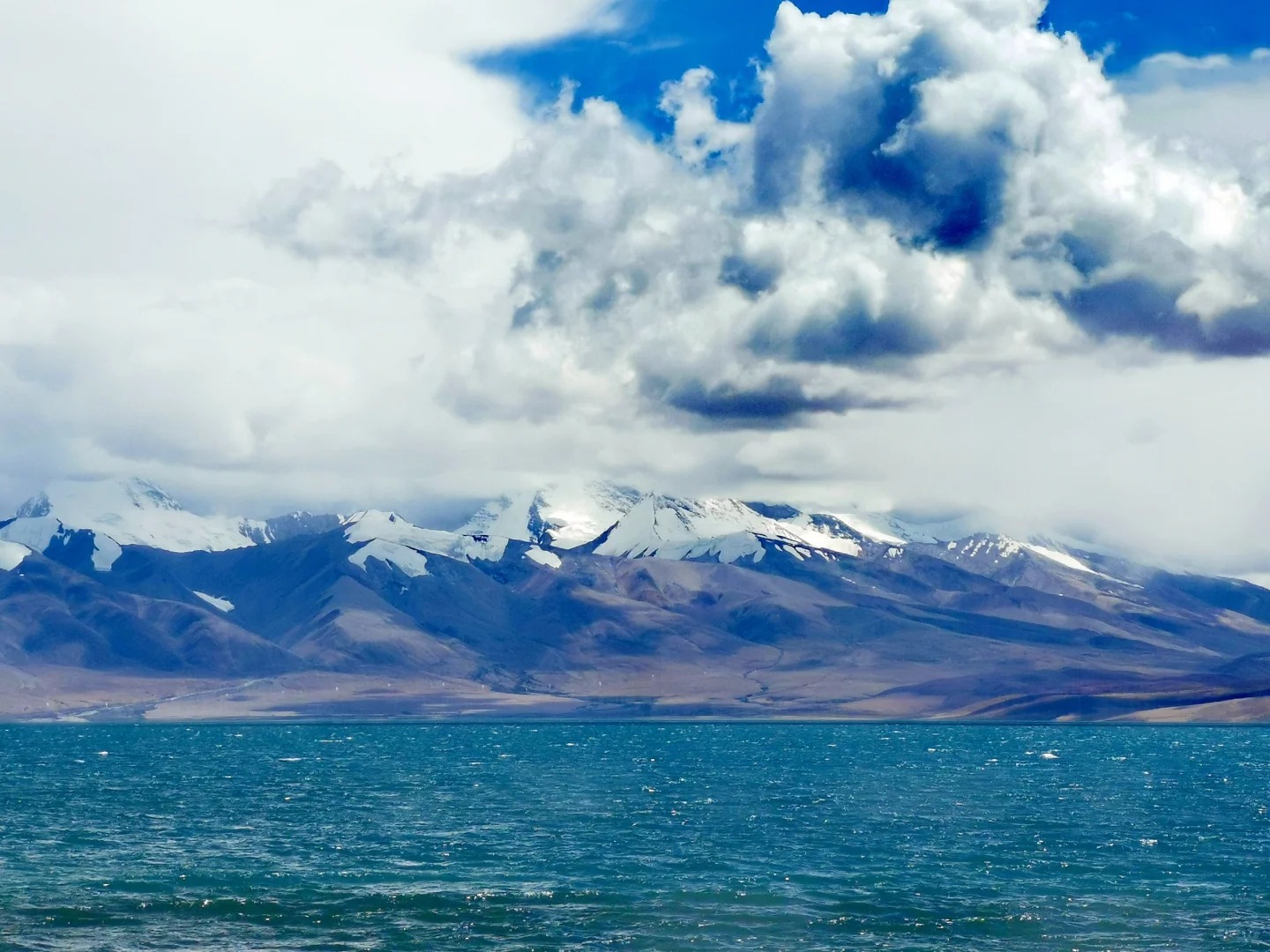
Photography Opportunities
- Sunrise and Sunset: The lake offers stunning opportunities for capturing the golden light of sunrise and sunset reflecting off its calm waters, with the majestic Himalayan peaks in the background.
- Wildlife: The lake and its surroundings are home to various species of birds, including bar-headed geese and Brahmini ducks. Patient photographers may capture unique shots of these high-altitude dwellers.
- Pilgrims and Local Culture: The presence of pilgrims and local Tibetans offers opportunities for capturing compelling portraits and scenes of spiritual devotion against the backdrop of the stunning landscape.
- Night Sky: The high altitude and minimal light pollution make Lake Manasarovar an excellent location for astrophotography, with the Milky Way often clearly visible on clear nights.
Modern Importance
- Spiritual Tourism: Lake Manasarovar continues to be a significant destination for spiritual tourism, attracting pilgrims and tourists from around the world, contributing to the local and regional economy.
- Ecological Research: As a high-altitude freshwater ecosystem, the lake is of great interest to scientists studying climate change, biodiversity, and high-altitude ecosystems.
- Water Resource: The lake serves as an important freshwater resource in the arid high-altitude region, supporting local communities and wildlife.
- Cultural Preservation: The lake and its surroundings play a crucial role in preserving Tibetan culture and traditional religious practices, serving as a living link to ancient traditions.
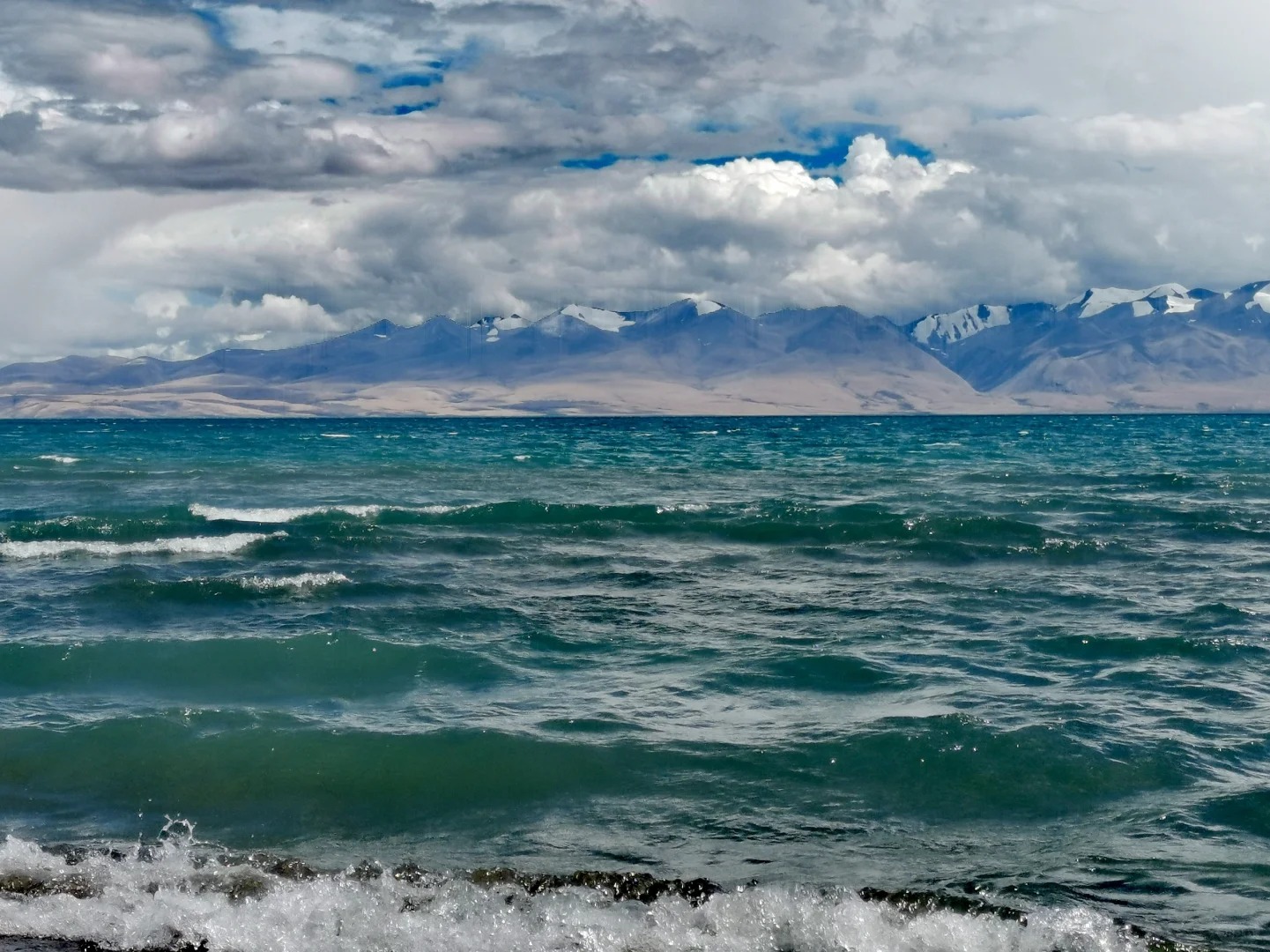
FAQ
- What is Lake Manasarovar famous for?
Lake Manasarovar is famous for its religious significance in Hinduism, Buddhism, Jainism, and Bon. It’s also known for its high altitude, pristine beauty, and proximity to Mount Kailash. - What’s inside Lake Manasarovar?
Lake Manasarovar is a freshwater lake. It contains various aquatic life forms adapted to high-altitude conditions. The lake itself is surrounded by stunning mountain scenery and a few small monasteries. - Is Lake Manasarovar free?
While there’s no specific entrance fee for Lake Manasarovar, visiting requires permits to enter Tibet, which come with associated costs. Additionally, most visitors reach the lake as part of organized tours, which have their own fees. - Is Lake Manasarovar worth visiting?
Yes, Lake Manasarovar is definitely worth visiting for its breathtaking natural beauty, spiritual significance, and unique high-altitude ecosystem. However, it’s important to be prepared for the challenging conditions due to its remote location and high altitude. - What to do in Lake Manasarovar?
At Lake Manasarovar, you can circumambulate the lake (a spiritual practice), visit nearby monasteries, enjoy the scenic beauty, observe wildlife, photograph the landscape, and experience the unique high-altitude environment. - How do I get to Lake Manasarovar in the local city?
The nearest major city is Lhasa, the capital of Tibet. From Lhasa, you typically need to join an organized tour that will take you on a multi-day journey (usually by 4WD vehicle) to reach Lake Manasarovar. The journey often includes stops at other significant sites in Tibet. - How to visit Lake Manasarovar?
To visit Lake Manasarovar, you need to obtain the necessary permits to enter Tibet. It’s best to arrange your visit through a reputable travel agency that specializes in Tibet tours. They can handle permits, transportation, and accommodation. Be prepared for high-altitude conditions and basic facilities. The best time to visit is from May to October, with July to September offering the most favorable weather.


